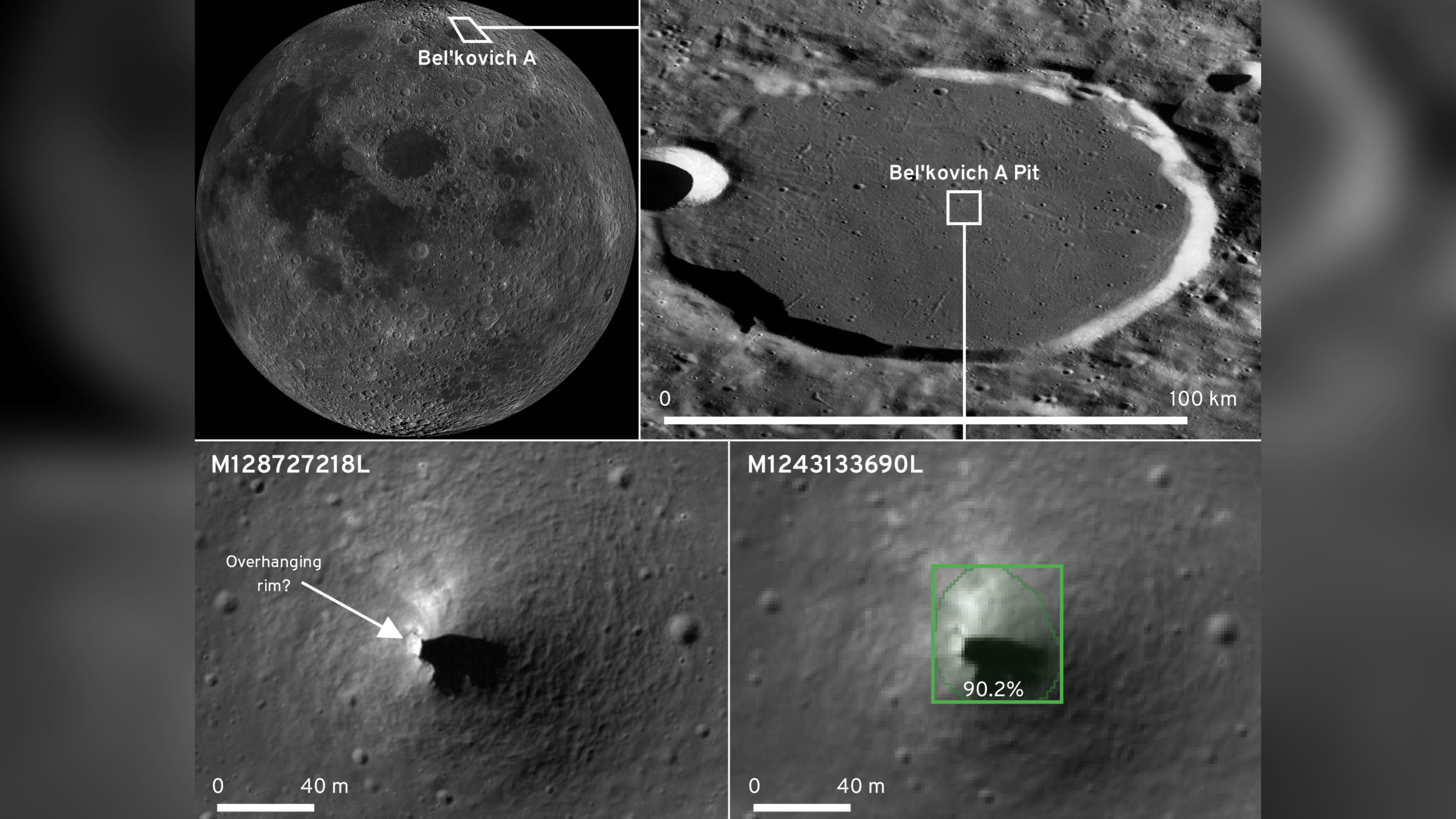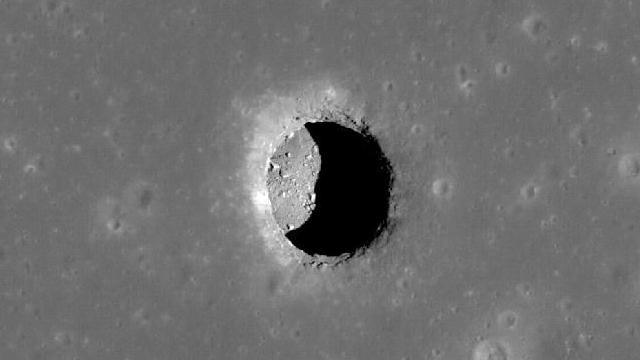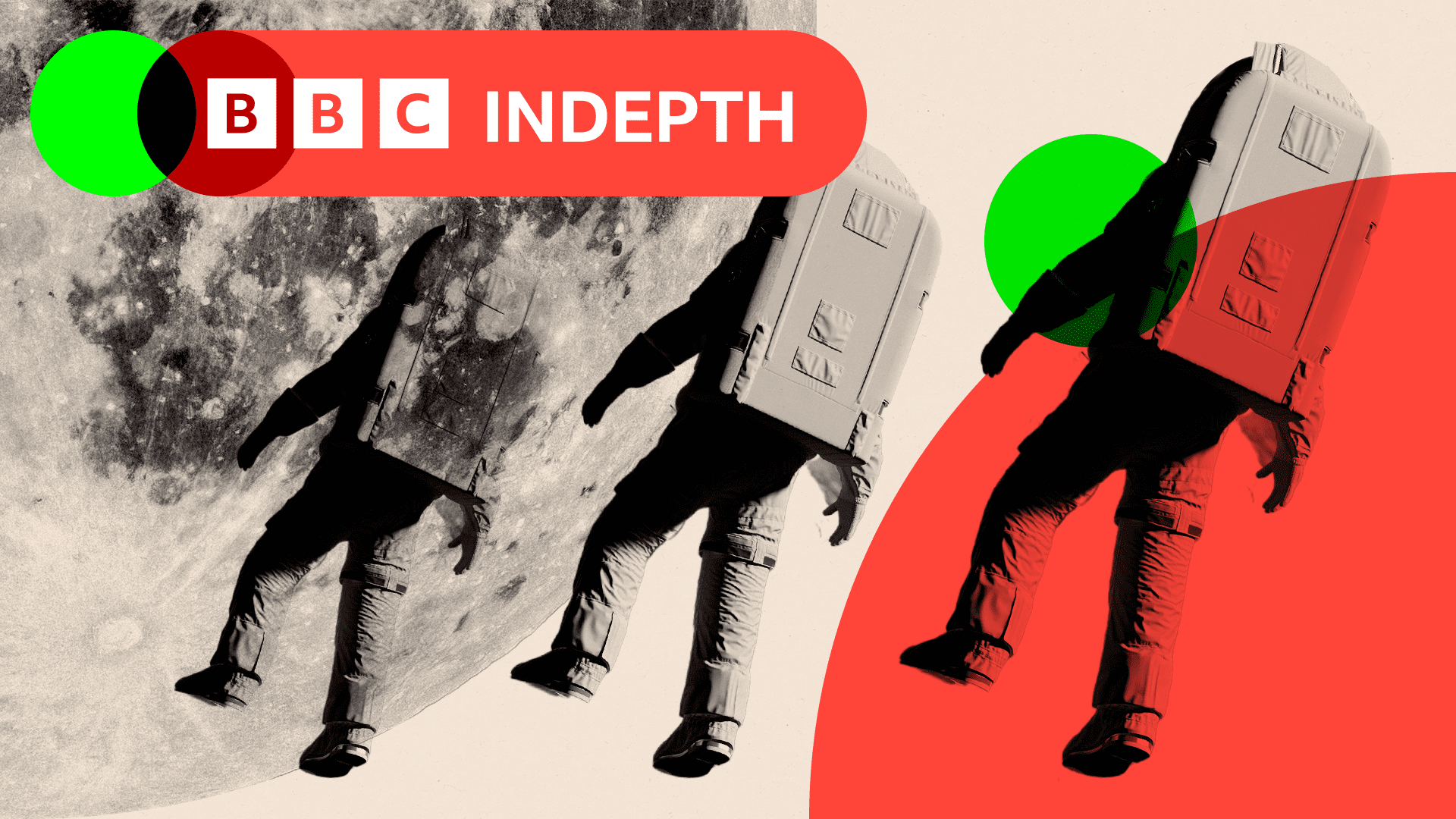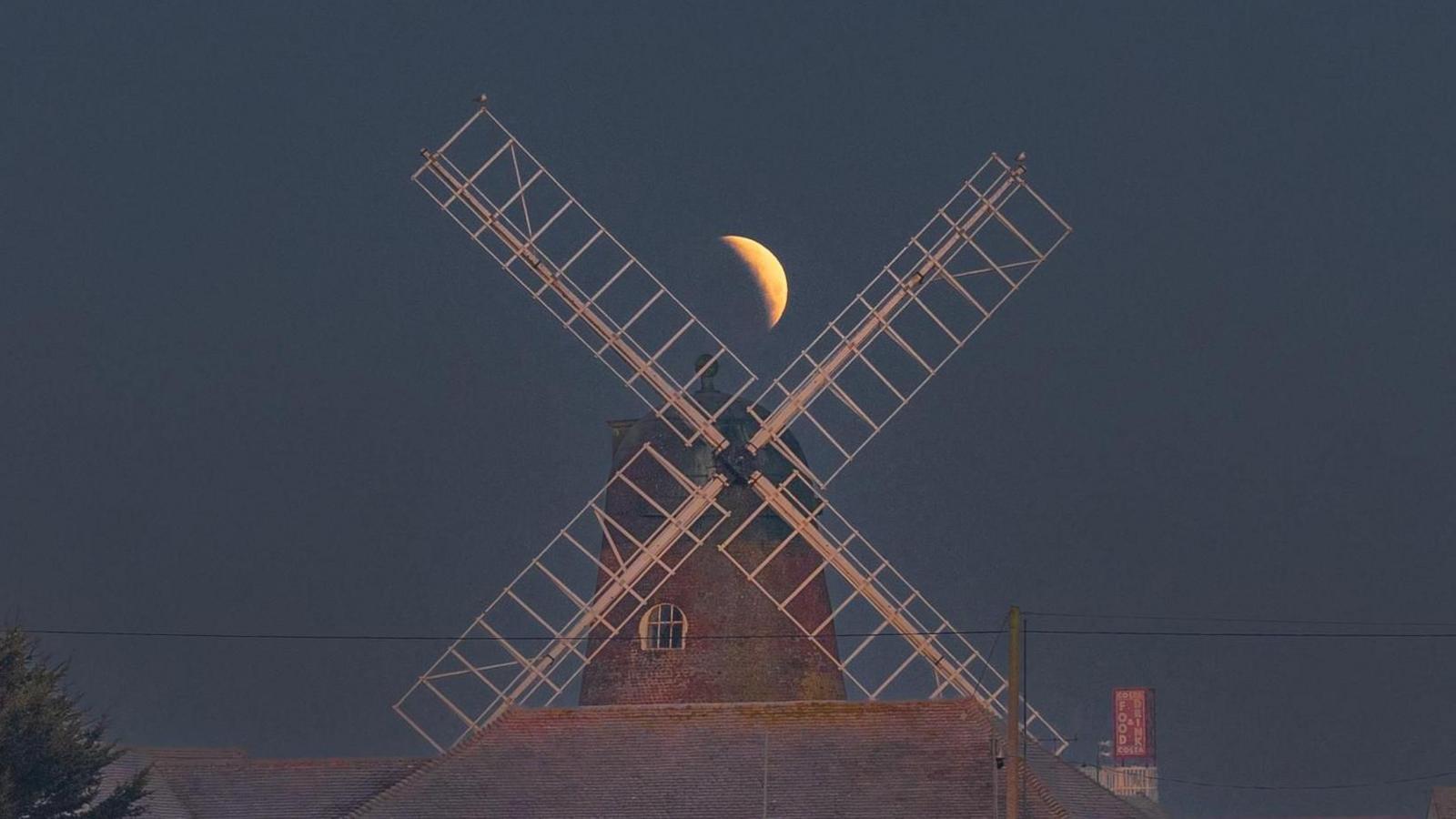AI used to find possible cave entrances on Moon

Bel'kovich A Pit is close to the Moon's north pole and therefore more likely to be a source of water
- Published
Artificial intelligence (AI) has been used to find two previously undiscovered possible cave entrances on the Moon, which could support human survival on future space missions.
Daniel Le Corre, a PhD researcher at the University of Kent, surveyed less than 0.3% of the lunar surface before finding the two pits.
The South Marius Hills Pit, which the university said was previously overlooked by researchers, is in an area thought to be rich in lava tubes, while the Bel'kovich A Pit is close to the Moon's north pole and more likely to be a source of water.
The pits were detected using an AI model that was trained to scan publicly available Nasa images and identify pits based on their distinctive shape.
The AI model is named Essa, which is short for entrances to sub-surface areas and a nod to the Cornish name of Mr Le Corre's hometown, Saltash.
Mr Le Corre said: "Thanks to Essa, we can now analyse volumes of space data at speeds that would have been unachievable manually, thus accelerating the search for the pits that will be the most favourable for future exploration or habitation."
The university said the pits may be connected to underground cave networks that could provide natural shelter from harmful radiation and micrometeorite impacts, as well as harbour water ice.
"It's this which makes them of interest to scientists as good bases for humans exploring or living on the Moon, and hopefully one day even Mars," a university spokesperson said.
Follow BBC Kent on Facebook, external, on X, external, and on Instagram, external. Send your story ideas to southeasttoday@bbc.co.uk, external or WhatsApp us on 08081 002250.
Related topics
- Published15 July 2024

- Published9 June 2024

- Published14 March
